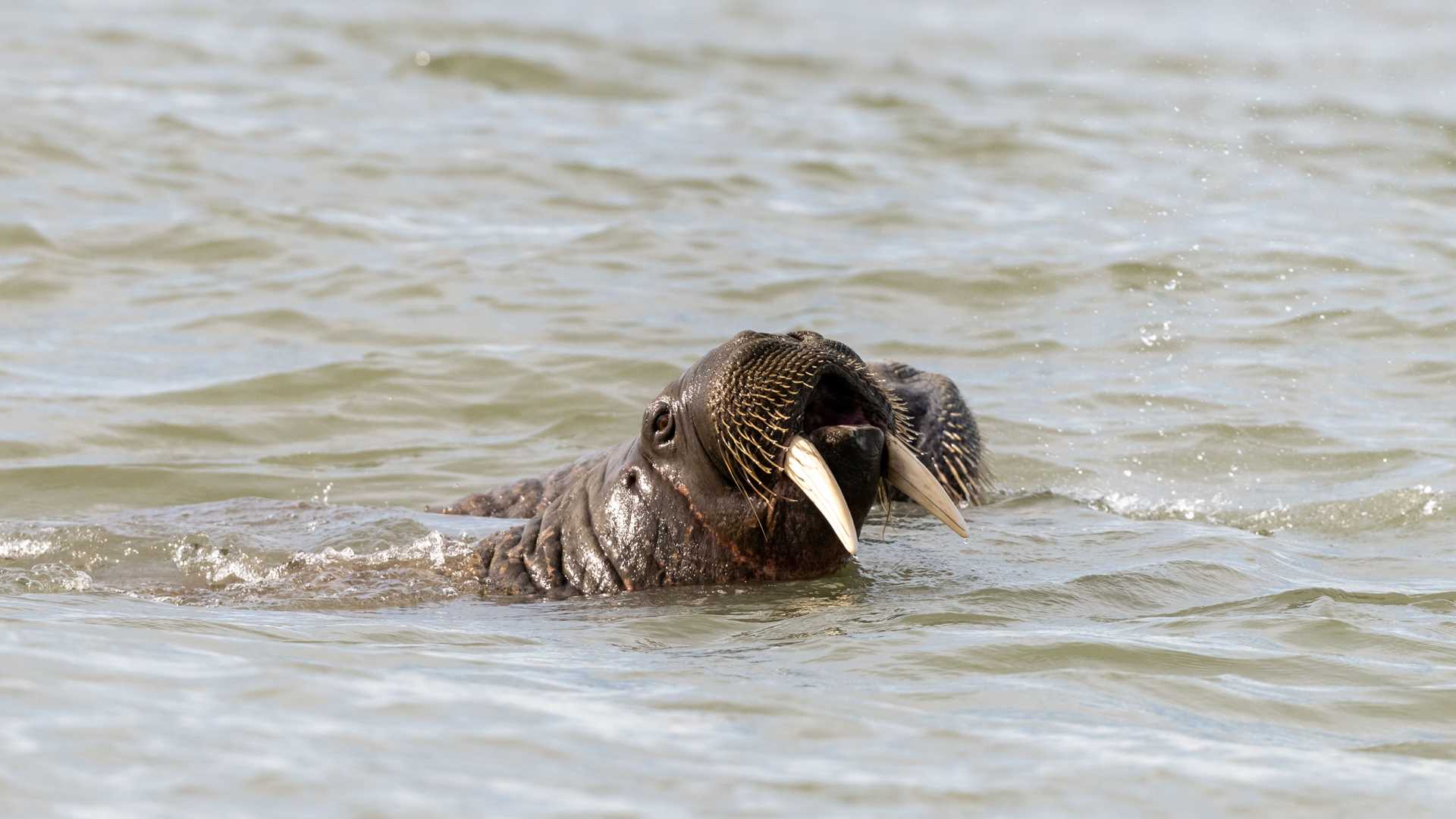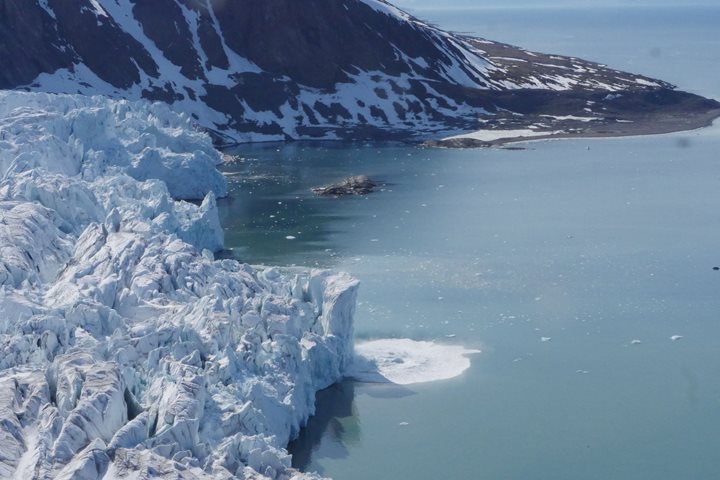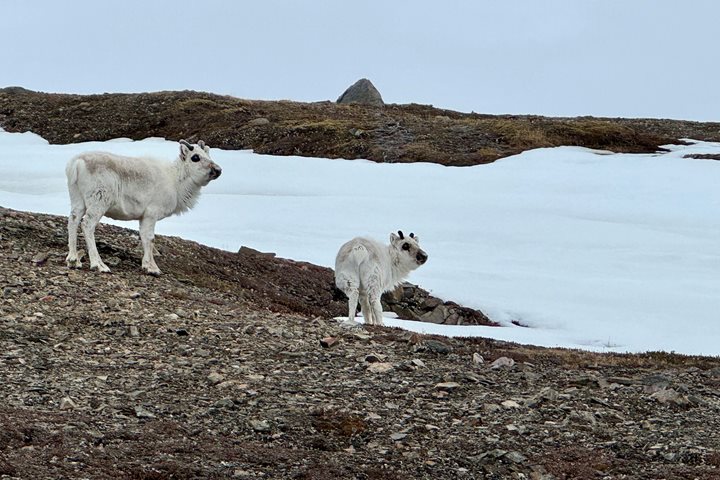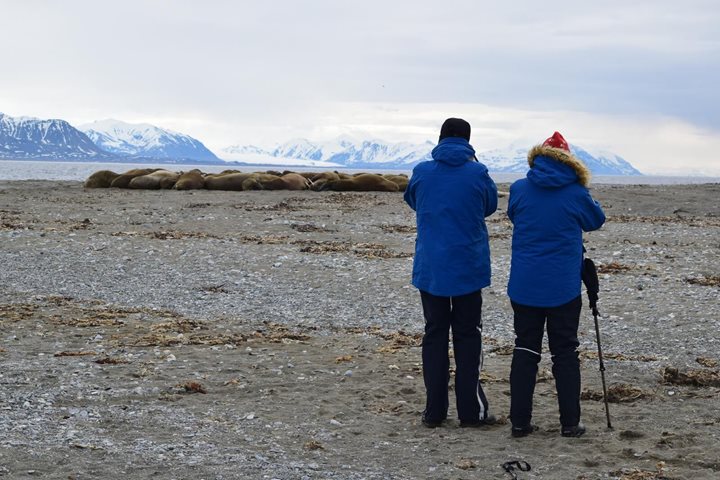After an overcast day, we awoke this morning to clear skies. As we rounded Kapp Lee, the beaches of Dolerittneset appeared. A Norwegian hunting cabin built in the early 1900s was just up the beach. In front of the hut, a popular walrus haul-out was found on the beach. We spent the morning Zodiac cruising along the beach and watching walruses at the haul-out. With immense difficulty, they lumbered in and out of the water and swam around our Zodiacs as they hunted for mollusks on the sandy bottom. The pile of blubber on shore was quiet except for an occasional outburst. These massive creatures were a joy to watch, and we are lucky, for they were nearly extirpated by hunters in Svalbard before they were protected.
In the afternoon, we moved farther south on Edgeøya Island to Russebukta, a large bay formed by a low, flat plain. With the sun shining, we set out for walks on the spongy tundra of the plain. The tiny life around our feet was bursting with color as the plants of the tundra take advantage of the short summer to bloom. Purple saxifrage, moss campion, tufted saxifrage, arctic willow, arctic chickweed, and innumerable mosses carpeted the plain. Along the low plains, Svalbard reindeer grazed on plant life, snow buntings flitted from rock to rock, and red-throated divers floated over the shallow lakes. It was a tranquil setting and the perfect place to observe the tundra awakening for summer. As we walked, we basked in the sunlight, explored the area, and learned about the lives of the flora and fauna of the tundra. What a perfect afternoon in Svalbard.







